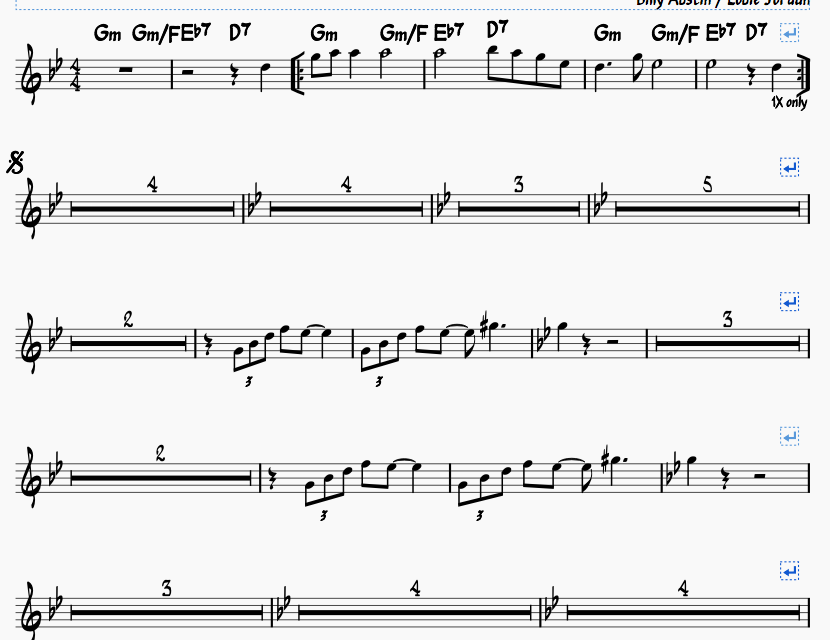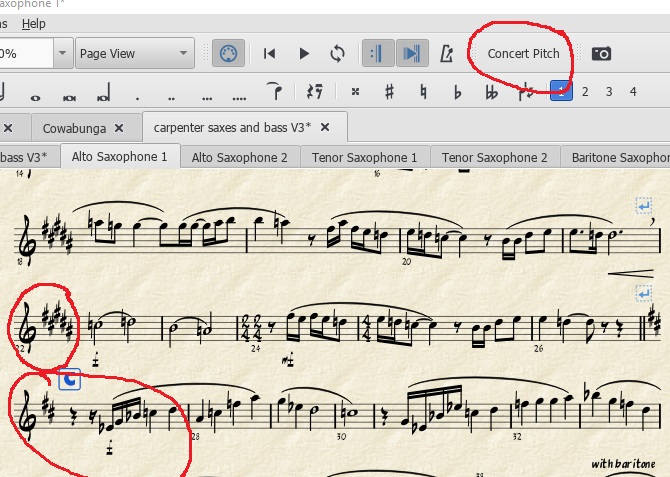
- #MUSESCORE CHANGE KEY SIGNATURE PDF#
- #MUSESCORE CHANGE KEY SIGNATURE SOFTWARE#
- #MUSESCORE CHANGE KEY SIGNATURE DOWNLOAD#
#MUSESCORE CHANGE KEY SIGNATURE PDF#
To print the lead sheet, select the entire score or selected instruments to Export to a PDF file. The midi file has now been transposed and Saved in MuseScore's format (*.mscz). There are four options to select from so choose the desired option or options.

Click File Pull Down Menu … Click Open … Navigate to the midi file and open it.This is an overview of importing a midi file into MuseScore, transposing the key signature and Exporting a lead sheet in PDF format. Import Midi File, Transpose, Create and Print Lead a Sheet One for creating a lead sheet from a Midi File and the second for creating a lead sheet from a PDF file.
#MUSESCORE CHANGE KEY SIGNATURE DOWNLOAD#
Visit the MuseScore web site to download the program, login and create an account and review Lessons 1 through 11 as well as an online handbook.īelow, I give you two Quick Start Guides. You can learn more about the MuseScore team here.
#MUSESCORE CHANGE KEY SIGNATURE SOFTWARE#
It is free and open source music notation software that runs on Windows, Mac and Linux. MuseScore is a software program used to create, play and print sheet music. Some useful Links will also be provided, to the MuseScore website, where you will find extensive instruction in the form of an online Handbook. This article is intended to serve as an overview of this product only and give a quick start to creating your first lead sheet and subsequently transposing this sheet to the key signature of your choice. While some editing and cleanup may need to be accomplished after importing a file, this certainly diminishes the task of entering every single note in the lead sheet. This new feature is still in the experimental stage. One of its newest features, in the latest Version 2.0.2, now supports the import of PDF files to reduce the need to create a lead sheet from scratch. Members have been commenting on its purpose and use, as related to creating music lead sheets. Check out various editions of the E major section of Chopin's Heroic Polonaise for one of the most extreme examples of this.Recently, there has been a growing interest in MuseScore, a music notation program, on the PSR Tutorial website.


If it's a ternary-form or binary-form piece, though, I'd probably switch key signatures.Įven worse, different editions for the same piece may insert more or fewer key signature changes than others.

So, it really depends on which era of classical music you're emulating more closely and what type of piece you're writing. The trends I've seen are that Baroque music usually does not change key signatures mid-piece despite modulating to various keys, while Romantic music often does change key signatures accordingly.įor Classical-era music, sonata-allegros often do not involve any key signature changes despite key changes being crucially important to their structure (the most common exception I've seen for this trend is to remove the key signature in the development section if it goes chromatically distant enough), while trios of minuet and trios and scherzo and trios pretty much always change key signatures if they are in a different key from the rest of the piece.


 0 kommentar(er)
0 kommentar(er)
